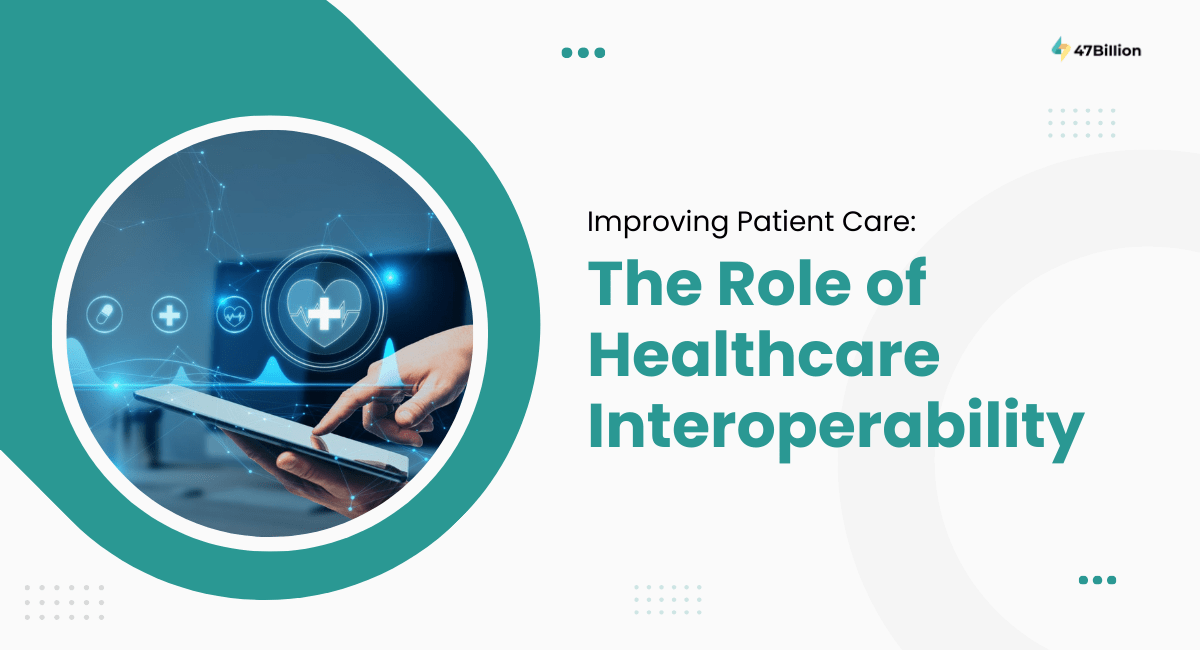The world is getting smaller, and people are connecting with over-networked computerized systems. Improved connections speed up reaction times as people can communicate quickly. Still, gains are being made as various software and computer systems link together for automated data sharing.
This is where Interoperability comes into play. Challenges of Interoperability should be considered while working in all types of industries, including Healthcare.
When it comes to the healthcare industry, Interoperability is the capability of different computer and software systems to exchange and share information from a range of vital sources that includes all healthcare providers.
For example, a doctor sends a patient for an MRI scan to address a tumor in the left lobe. The healthcare provider can share the patient’s records with the radiologist, and the radiologist’s team can then forward the results from the imaging department despite the fact facilities are using different systems internally.
The data sharing becomes so simple. A patient’s complete medical history is accessible to general physicians and relevant stakeholders in an interoperable system. This kind of system reduces redundant procedures. This efficiency is exemplified in the U.S., where around 86% of office-based physicians use EHRs. The interoperable exchange allows seamless referrals, digitized reports, and automated billing. This not only enhances patient and provider experience but also aligns with the widespread adoption of EHR, emphasizing the tangible benefits of a connected healthcare ecosystem.
Now let’s understand Interoperability –
Healthcare interoperability refers to the ability of a variety of healthcare information systems, devices, applications, or software to seamlessly exchange and use patient data across various platforms or organizations within the healthcare ecosystem. It enables the sharing and utilization of medical information, such as patient records, test results, medication history, imaging studies, and other relevant health data, regardless of the technology or system used.
Achieving healthcare interoperability is crucial for several reasons:
- Continuity of Care: It ensures that healthcare providers are able to access comprehensive and up-to-date patient information, allowing for better-informed decision-making and improved patient care, especially in cases where a patient may receive treatment from multiple providers or healthcare facilities.
- Efficiency and Reduced Errors: Interoperability streamlines workflows by eliminating the need for manual data entry or redundant tests, reducing errors, and improving efficiency in healthcare delivery.
- Patient Empowerment: It allows patients to access and control their health information, fostering greater engagement in their care and enabling them to share their data with different healthcare providers or systems as needed.
- Research and Public Health Initiatives: Interoperability supports research efforts by facilitating access to large datasets for studies, analytics, and public health initiatives, enabling better population health management and disease prevention strategies.
4 Levels of Healthcare Interoperability

Healthcare interoperability is categorized into four levels, as defined by informatics experts and the Healthcare Information and Management Systems Society (HIMSS). Achieving some of these levels is feasible with current healthcare IT infrastructure, while others demand innovation and advancements in patient-centered technology. These defined levels serve as a roadmap, outlining the evolution and future possibilities in enhancing Interoperability within the healthcare landscape.
These levels include:
Foundational - This level, termed simple transport, represents the fundamental stage of Interoperability. It involves securely moving data between systems or devices without converting or interpreting it. For instance, a nurse downloads a patient’s lab results in a PDF format from a portal and manually inputs the data into the patient’s health record.
Structural Interoperability – also known as structured transport, involves standardizing all data to a specific format, enabling interpretation by multiple systems or devices. This
organized data follows a specific order, allowing the receiving system to identify distinct data fields automatically. Standards like FHIR and HL7 ensure structural Interoperability, ensuring consistent, centralized, and accessible records for seamless movement between systems.
Semantic Interoperability, or semantic transport – facilitates data exchange between systems with distinct data structures. Imaging systems, with various DICOM and non-DICOM formats, exemplify this. Semantic Interoperability enables seamless transfer, interpretation, and integration of images across systems, regardless of the original format. However, collecting and transferring data becomes complex due to diverse information presentations, leading some experts to assert that artificial intelligence is essential for achieving complete semantic Interoperability.
Organizational Interoperability – denotes the smooth data exchange among diverse entities with varying requirements and goals. Achieving this requires both policy and governance innovations alongside technological advancements, ensuring seamless consent, security, and integrated workflows across different groups. While some argue that semantics holds the highest level of Interoperability, others contend that organizational Interoperability is paramount.
Key Benefits of Healthcare Interoperability

Streamlined care coordination - Healthcare interoperability plays a critical role in facilitating streamlined care coordination among various healthcare providers, institutions, and systems –
- Seamless Data Exchange: Interoperability enables the secure and seamless exchange of patient health information among different healthcare providers and systems. This ensures that data can be accessed and shared in real time. As a result, healthcare professionals have a comprehensive view of a patient’s health status, leading to more informed decisions and better care coordination.
- Reduced Administrative Burden: Interoperability streamlines administrative tasks by automating data-sharing processes. It minimizes manual entry of patient information, reduces paperwork, and lowers the administrative burden on healthcare staff. This allows providers to focus on delivering quality care to patients.
- Efficient Referral Management: Interoperability aids in smoother referral processes. When a patient is referred from one healthcare facility/provider to another, interoperable systems allow for the swift and secure transfer of relevant medical information, ensuring continuity of care and reducing delays in treatment.
- Care Transitions: During transitions between different care settings (such as hospitals, clinics, or home care), Interoperability ensures that vital patient information travels with the patient. This continuity of information supports a smooth transition, reducing medical errors and improving patient safety.
Optimal performance - Achieving optimal performance with healthcare interoperability involves several key factors that contribute to efficient data exchange, seamless workflows, and improved patient care outcomes-
- Standardization of Data and Protocols: Implementing standardized formats, coding systems (such as HL7, FHIR), and protocols ensures that different healthcare systems and devices can communicate effectively. Common standards facilitate the smooth exchange of patient information without compatibility issues.
- Robust Integration Capabilities: Healthcare systems should have robust integration capabilities to connect disparate systems, applications, and devices seamlessly. Integration frameworks and middleware solutions enable data sharing across various platforms while maintaining security and privacy standards.
- Strong Data Security Measures: Ensuring the security and privacy of patient health information is paramount. Robust encryption, authentication, access controls, and compliance with regulatory requirements (such as HIPAA) are essential to safeguard sensitive healthcare data during its exchange and storage.
- User-Friendly Interfaces and Workflows: User-friendly interfaces and intuitive workflows within interoperable systems are crucial for healthcare professionals to access and utilize patient data efficiently. Systems that are easy to navigate and use lead to improved adoption and smoother operations.
- Real-Time Data Access: Providing real-time access to updated patient information across healthcare settings is critical for timely decision-making and delivering appropriate care. Interoperable systems should ensure that healthcare providers have access to the most recent and comprehensive data available.
- Scalability and Flexibility: Interoperable systems are scalable to accommodate increasing data volumes and evolving technological advancements. Flexibility in adapting to changes in healthcare regulations, standards, and emerging technologies is crucial for sustained optimal performance.
- Data Analytics and Insights: Leveraging interoperable data for analytics and insights can provide valuable information for improving care delivery, population health management, and identifying patterns that lead to improved outcomes.
Better interactions - Healthcare interoperability can significantly enhance interactions between patients, healthcare providers, and various healthcare systems. Here’s how it can lead to better interactions-
- Improved Patient Engagement: Interoperability helps patients access their health data, test results, and other medical information through patient portals or mobile apps. This access empowers patients to take an active role in their healthcare, enabling better-informed discussions with healthcare providers and fostering a stronger patient-provider relationship.
- Seamless Communication between Providers: Interoperability ensures that healthcare providers can access the patient’s complete medical history and relevant data from other providers. This facilitates improved collaboration among healthcare teams, leading to more coordinated and efficient care delivery.
- Enhanced Care Coordination: With interoperable systems, different healthcare providers can easily share information about a patient’s ongoing treatment plans, medications, allergies, and procedures. This streamlined exchange of data supports smoother transitions between care settings and reduces the chances of errors due to incomplete or inaccurate information.
- Personalized and Informed Care Decisions: Interoperability allows healthcare providers to see a comprehensive view of a patient’s health history, enabling them to tailor treatments and care plans based on individual needs and preferences.
- Improved Telehealth and Remote Monitoring: Interoperable systems support telehealth initiatives and remote patient monitoring by enabling the exchange of real-time data between patients and healthcare providers. This fosters ongoing communication, allowing providers to monitor patients’ health remotely and intervene when necessary.
Health Information Exchange & Interoperability
In the era of consumer-centric healthcare, the demand for quick and continuous access to health records has driven the development of Health Information Exchanges (HIEs). These specialized networks rely on interoperable systems to seamlessly and securely share electronic health information. While the introduction of Electronic Health Records (EHRs) marked a significant step toward HIEs, several challenges impede achieving the necessary level of Interoperability for full benefits.
Let’s have a look at these challenges:
1. Lack of standardization: Despite the increasing prevalence of standardized record formats like FHIR and HL7 and regulatory pressures urging EHR vendors to offer interoperable APIs, the challenge persists due to many providers and healthcare systems relying on customized EHR systems. Converting these systems to a universal format for seamless sharing remains difficult, hindering comprehensive standardization in the healthcare data landscape.
2. Security: Balancing access to health information and protecting sensitive data is a big challenge for healthcare as cyber threats increase. Finding the right balance is like ensuring health info is easily accessible yet super secure, especially with more cyber-attacks.
We must make sure info is easy to get to but also very secure to keep patient privacy and health data safe.
3. Consent: Creating digital health systems where health information flows between providers can clarify when patient consent is necessary and at what level. Healthcare organizations, being cautious, often lean towards not sharing information to ensure patient privacy. Striking the right balance ensures transparent consent practices, promoting a secure and patient-centric approach to information sharing in digital health systems.
4. Professional burdens: Introducing new recordkeeping tools requires people to learn how to use them, creating professional burdens. Healthcare professionals who are hesitant about new systems find Electronic Health Record (EHR) systems more aligned with administrative and billing workflows than their clinical needs. The challenge lies in ensuring that new tools cater to the specific requirements of clinicians to alleviate these professional burdens effectively.
Overcoming these challenges is possible with advancements in cloud computing, particularly hybrid cloud solutions. Advanced technologies have made it easier for organizations to migrate and consistently secure data. Cloud environments offer the chance to create data pipelines that standardize information to widely accepted formats, such as FHIR. They also ensure secure access for various stakeholders, including payers, providers, and patients, contributing to a more streamlined and secure data-sharing ecosystem.
The Challenges that may occur during the adoption of Interoperability
Though healthcare experts acknowledge that enhanced Interoperability would benefit the overall healthcare system, healthcare organizations commonly encounter challenges as they strive to make their data and systems more interconnected. Let’s delve into these obstacles and explore strategies for overcoming them.
1. Uncoordinated collaboration: Refining Interoperability demands effective coordination among diverse entities, including organizations, regulators, and leaders. Regulators set standards, but organizations keen on proactive Interoperability should craft a dedicated strategy. Prioritizing Interoperability planning within organizations is key to fostering seamless collaboration and ensuring alignment with established standards and rules in the healthcare landscape.
2. Budget constraints: Some organizations need more financial and technical means to create a fully interoperable system. Seeking government grants for health record system updates is advisable for eligible organizations. Additionally, certain cloud vendors provide flexible pay-as-you-go models, potentially easing the affordability and predictability of technical expenses for those with limited budgets.
3. Diverse technology demands: Varied technology demands arise as organizations must adhere to specific regulations based on care type and location, leading to highly tailored data systems. Organizations leverage hybrid cloud platforms to bridge internal and external systems. This approach enables data amalgamation and integration without compromising necessary customizations, facilitating seamless connectivity between diverse systems.
4. Outdated legacy systems: Healthcare organizations with older legacy systems face the challenges of modernizing their systems along with meeting interoperability requisites. Organizations can accomplish both goals by using a hybrid cloud approach for extracting data from legacy systems. This approach makes data more accessible for modern applications and programs. Also, organizations can continue data transfer while updating their systems.
Conclusion
Interoperability serves as the foundation in pursuit of delivering top-tier, patient-centric care. The facilitation of seamless data exchange and collaboration among diverse systems not only elevates care coordination but also significantly contributes to improved patient safety and engagement.
Despite several benefits, achieving Interoperability in healthcare poses its own set of challenges. However, the efforts of various initiatives such as HL7 FHIR (Fast Healthcare Interoperability Resources), the establishment of Health Information Exchanges (HIEs), and collaborative endeavors in industry alliances are driving progress in overcoming these challenges.
This ultimately leads to creating a connected healthcare ecosystem where information flows efficiently across platforms, ultimately benefiting both healthcare patients and providers.
As the data standards evolve, technical infrastructure advances, governance frameworks strengthen, and the trajectory of interoperability becomes more effective.
This is going to lead to better patient outcomes, enhanced healthcare experiences, and increased efficiency in the healthcare ecosystem. The journey toward achieving seamless Interoperability in healthcare has its challenges. Still, the strides being made underscore a shared commitment to realizing a connected and interoperable future in healthcare.







